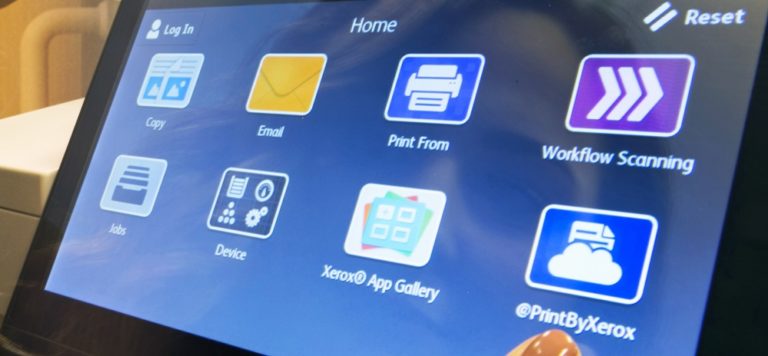
By Philip Gittelman
50 years ago, managers from Xerox corporate communications came to me with a simple question :How could Xerox — known as the company that introduced the world to the enormously successful plain-paper copier — best communicate that its corporate leaders were still guiding the corporation and looking toward the future?
My solution led to a unique documentary called Company for Lunch, which was honored in film festivals around the world. It featured a photo-animation technique that I developed, and the talents of six brilliant photographers from the international cooperative of Magnum Photos.* I use it as a case study of how to best use video to tell an institution’s story. We used Xerox’s 1965 Annual Meeting to tell the company’s story through the eyes shareholders and managers. Take a look; it’s only 24 minutes.
ARVE Error: need id and provider
These six tips will help you tell your brand’s story more effectively, regardless if the output is a documentary, a 3-minute YouTube sensation, or a 6-second Vine.
Be Unconventional
The conventional solution to the question Xerox posed might have been answered by building a film around interviews with the executives. We dug a little deeper and learned that the annual shareholder’s meeting was going to be held in the largest circus tent in the country. When we also learned that the meeting would be attended by shareholders who might critically confront management, we felt we had the substance of a dramatic story, and an opportunity to demonstrate the quality of the corporation’s leadership.
The Story Must Be Credible
Too often, especially in corporate communications, artfulness is used as a substitute for believability. To ensure that our story was credible, we asked for access to all of the management meetings related to the annual meeting. That request was granted and not unexpectedly, we were able to record exchanges that would never have made it past the public relations office. But being able to hear and see the head of Xerox Security instruct his staff that if a shareholder has to be removed, then they “must not strike our guests with your fists or hands,” meant that here was an organization that had no fear about its “warts.” That scene, and others like it, were disarming and couldn’t help but make the viewer feel that they were looking at an organization that told you “like it was.”
Humanize Your Story
Have your story told by people with whom viewers can identify.
Less Is Better Than More – Micro Over Macro
However engaging and important that information and ideas may appear from inside the organization, by selectively choosing fewer nuggets and making them come alive, you will benefit what has been left unspoken, but implied.
Seek Every Opportunity to Make Your Viewers Laugh
Laughter’s ability to take the sting out of difficult issues and subjects is unmatched. Consider the exchange, early in the film, when shareholder Evelyn Y. Davis accused president Joe Wilson of deliberately leaving her resolution, “to restrict Xerox from making contributions to education and charity,” off the meeting’s agenda.
Wilson assured her that it “will come before the meeting.” Unsatisfied, Ms. Davis demanded “Before your address!” Wilson brought the house down — and every viewer, as well — when he answered: “My address is going to be so brief, that you won’t know –whether it came before or after.”
Reach for the Heart, as Well as the Mind
At every stage of your video production you must challenge yourself, by asking: “Where is the emotional content of what we’re trying to convey?
Reaching for the heart can be done simply in a phrase, as Wilson did in his argument against the limitation of Ms. Davis’ resolution, when he said, “the corporation sees a great opportunity in the field of education – teaching people throughout the world, how to get knowledge more easily, more cheaply, call it what you will.”
Often, images alone, will covey powerful feelings to support — and even make — your message. Consider the images that you’ve seen in Company For Lunch by Cornell Capa, Bruce Davidson, Charles Harbutt, Costa Manos, Inge Morath and Andre Kertesz.*
Subscribe to this blog and receive email updates when we publish a new article.
* Updated on May 7, 2015.




The integration of events at an important stockholders meeting and the back story was extremely well done. The interplay between the animated still photography and the actual events was fascinating. All in all, it produced a very dynamic effect for the film. Great job!
Phillip,
Sunday’s NYT Virtual Reality video accompanying its story on three children displaced by war reminded me of your simple, yet powerful method of storytelling.
Micro-storytelling moves the needle. http://share.nytvr.immersivemedia.com?g=1&s=8
I became aware of this film because when I was in college I worked as a film print inspector at West Glen Films. West Glen was what was called a “free loan film distributor” and they distributed many different films sponsored by different companies to social and church groups as well as tv stations and other parties who wanted to show the films. Xerox hired West Glen to distribute Company for Lunch.
Since I spent most of my nights working repairing the prints, every now and then I looked at them, and Company for Lunch exposed me to Xerox. I was so impressed with the film that I watched it many times and I was very impressed with the company and that they would even commission a film like this and distribute it. Here was a company that was willing to tell its story in a balanced way and as Mr. Gittleman says – “warts and all”.
I decided that this was the kind of company that I wanted to work for. As a junior in college I applied for a full time job at Xerox and they hired me not really understanding that I was not available until a full year later after I graduated. They were surprised, and they were willing to wait. My professional career started in 1975 as an employee of Xerox where I stayed for 4 years and learned a great deal. After that, with large company experience under my belt and an MBA that Xerox helped pay for, I became a serial entrepreneur starting and growing many companies in the technology field.
My career absolutely would not have started at Xerox if it were not for this exceptional film and the expertise of the filmmaker of this film and it taught me early on to build companies with the vision shown by Xerox at this time.